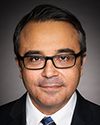Thank you, Chair, and hello to my colleagues. To the witnesses, thank you so much.
My questions are going to be for Dr. Patterson.
I spent some time in Nunavut when I was with the Nova Scotia Community College and working with the Nunavut Arctic College. I often felt very much at home, given that there were quite a few Cape Bretoners and Newfoundlanders there, so it's great to connect with you.
Dr. Patterson, early on in the pandemic there was great cause for concern about how the territories would fare with limited health resources. The federal government, in partnership with the Government of Nunavut, took quick, early action to focus on outbreak prevention, ensuring that the territories had the resources they needed.
From your perspective as a chief public health officer of Nunavut, why do all levels of government need to work together to combat COVID-19?
I have a secondary question. It's based on your testimony. You talked about Nunavut having a unique set of challenges in talking about being involved in decision-making processes and informing policy on health.
I'm wondering how we can we do this better between the government you represent in your area and those provincially and federally.




